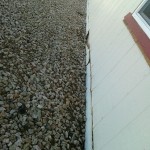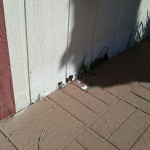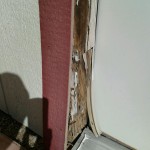There are so many things that can cause you to have those sleepness nights, so worring about what’s eating your home shouldn’t have to be one of those things. So whose got your back? Well, ProBest Pest Management if you have one of our warranties. The pictures above are just one more reason why wood shouldn’t touch the soil and you should be able to clearly see the foundation slab.
Subterranean termites (western) – live in underground colonies or in moist secluded areas aboveground that can contain up to 250,000 members. They build distinctive “mud tubes” to gain access to food sources and to protect themselves from open air.
Wood Rot – A wood-decay fungus is a variety of fungus that digests moist wood, causing it to rot. Some wood-decay fungi attack dead wood, such as brown rot -is a dry crumbly condition sometimes incorrectly referred to as dry rot in general. The term brown rot replaced the general use of the term dry rot, as wood must be damp to decay, although it may become dry later.
Powderpost Beetles – The term “powderpost” comes from the fact that the larvae of these beetles feed on wood and, given enough time, can reduce it to a mass of fine powder. Powderpost beetles spend months or years inside the wood in the larval stage. Items that can be infested by powderpost beetles include wooden artifacts, frames, furniture, tool handles, gun stocks, books, toys, bamboo, flooring, and structural timbers. If an item is brought into a home this beetle could reinfest the entire structure.
Drywood termites are social insects that live in colonies in sound, dry wood. Each colony consists of offspring from an original pair and cut across the grain while subterranean termites usually go with the grain.




